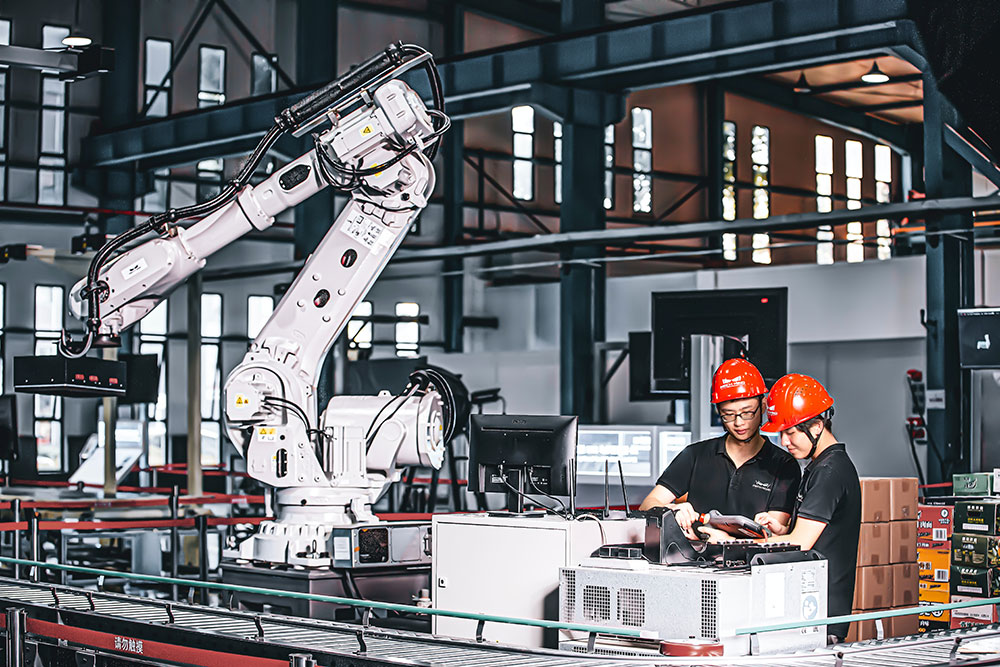Using VR to train in Manufacturing
As the world increasingly moves online, the manufacturing industry has been looking for ways to train its employees virtually. One solution is VR, or virtual reality. VR enables employees to gain immersive, hands-on experience in a safe and controlled environment. metaverse platforms offer business and development services that can help companies create bespoke VR training programs.
These programs can be used to educate employees on everything from safety procedures to assembly line techniques. The use of VR in manufacturing has the potential to revolutionise the way businesses train employees. VR has the power to transform how we learn and work in the 21st century.
VR safety training
VR can offer a safe and controlled environment in which to train employees in new skills or processes. By investing in the development of VR training programs, companies can provide their workforce with the latest VR education and tuition. As a result, companies are able to stay ahead of the competition and ensure employees are fully trained and safety-conscious.
VR training simulations can also help develop soft skills. This can lead to improved performance and a better understanding of company procedures. This means VR education can provide new employees with the knowledge and skills they need to hit the ground running.
VR onboarding
In today’s competitive marketplace, companies are always looking for new ways to improve their bottom line. One way they are doing this is by using VR for onboarding in the manufacturing industry. VR allows companies to train their workforce faster and more efficiently. It also allows for VR tuition, which can be a great way to learn new skills. VR instructors can be found in Australia and many other countries. The benefits of using VR for onboarding in the manufacturing industry are numerous. It is a great way to improve productivity and efficiency, and it can also help to reduce training costs.
VR group training
Virtual reality (VR) is proving to be an invaluable asset for group training. The fully immersive environment of VR makes it possible to replicate the most difficult workplace scenarios, giving employees from all levels of experience a convenient way to practice new processes or equipment before doing them in real life.
Not only does this reduce the risk of downtime due to errors or accidents, but it’s also much faster and cheaper than traditional one-on-one instruction since VR can accommodate large numbers of people simultaneously. Ultimately, this makes VR a cost-effective and dynamic solution for manufacturers looking to achieve better results with less manpower.
VR class training
By using VR, employees get a first-hand look at manufacturing processes in a controlled environment. This helps prevent accidents and improve safety. In addition, VR can be used to simulate different work environments, allowing students to experience different production lines.
There are many benefits to using VR to train in manufacturing in Australia. First, VR provides a realistic and immersive experience that can help workers understand complex processes. Second, VR can be used to train workers in a safe environment.
Finally, VR can be a cost-effective solution for training large numbers of workers. For more information, contact the team at 3D Walkabout.
Summary: How can VR used to train in Manufacturing industry?
As the world moves online, VR is revolutionising employee training, providing immersive and safe learning experiences.
Metaverse platforms assist in creating tailor-made VR training programs, covering safety procedures and assembly techniques.
VR training ensures safety-conscious employees and enhances soft skills, leading to improved performance and understanding of company procedures.
VR is utilised for efficient onboarding, enabling faster training and reducing costs while improving productivity and efficiency.
VR is valuable for group training, simulating complex workplace scenarios and allowing employees to practice in controlled environments, preventing accidents and improving safety.
FAQs
How can VR reduce costs in engineering?
In traditional design and development processes, engineers use 2D drawings or computer models to help them visualize a product before it’s built. This means that they have to rely on their imagination and memory to picture how the finished product will look and work. This often leads to mistakes being made and costly rework being required during production.
How can VR be used in product design?
When used in product design, VR can create a virtual prototype of the product that can be tested before the first physical prototype is ever built. This early testing can save companies time and money by finding potential flaws in their designs before investing time and money into physical prototypes that may not work as anticipated.
How can VR improve engineering instructions?
Virtual reality (VR) has the potential to transform engineering and manufacturing. The technology can be used to improve instructions for complex machinery and help people learn how to use new machines. Engineers often struggle with writing instructions that are clear, concise and understandable. With VR, manufacturers can create an immersive experience that simulates real-world conditions.
How is VR used in engineering?
Virtual Reality (VR) is a technology that allows engineers to see 3D models of a product before it’s even been built. This helps them test their designs, find errors, and make improvements before they’ve invested too much time or money into a project.


